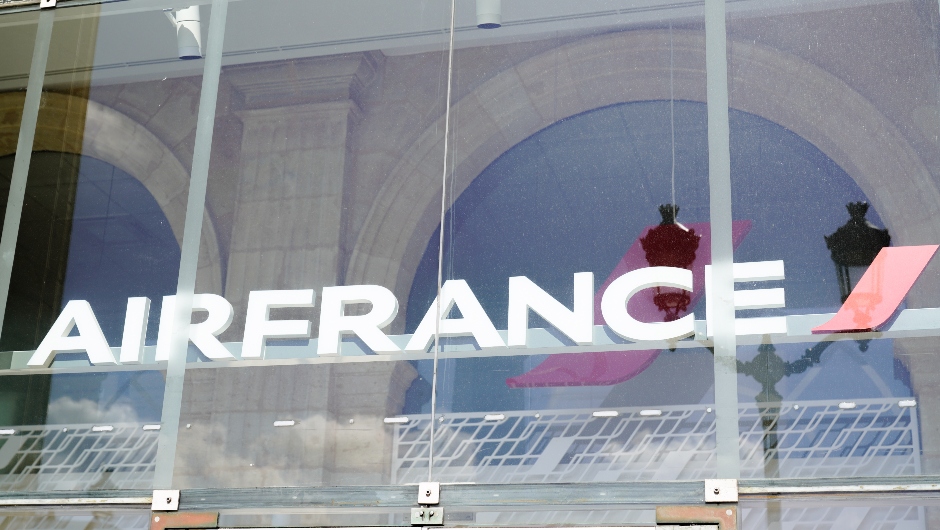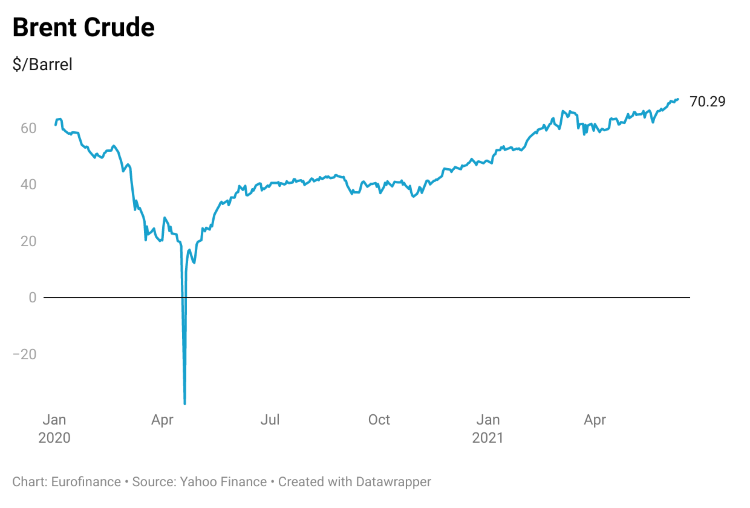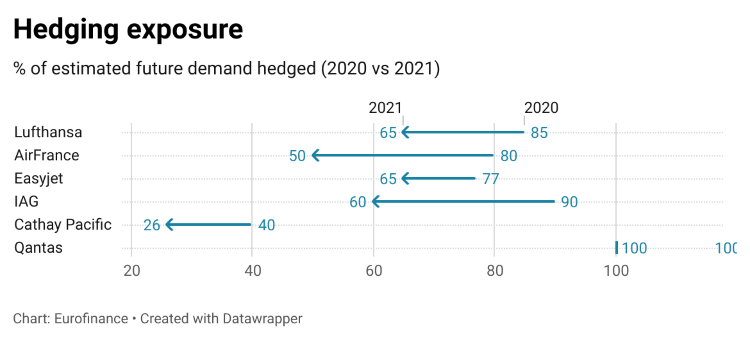Airlines in a quandary over hedging as fuel price rises

Airlines slashed their hedging by almost a quarter, as measured by average percentage of forecast fuel purchases
For treasurers at global airlines, pandemic-struck 2020 was a “terrible” year for fuel hedging. Travel demand plunged at the same time as oil prices, resulting in an “over-hedged” derivatives position. Now as the global economy emerges from the pandemic, crude oil prices have surged to a two-year high and airlines across the world face the opposite problem of being under-hedged.
Shift in Hedging policy
In normal times, treasurers can predict fuel consumption and hedge against it, keeping price volatility out of their financial results with the help of hedge accounting rules. But last year, they had derivative contracts for which there was no corresponding purchase of jet fuel, making the hedges ineffective under the rules. Their accounts were cruelly exposed when Brent crude prices plunged in the first half of 2020, resulting in European airlines including IAG, AirFrance, Ryanair and Easyjet record $4.6 billion in losses. Meanwhile, ineffective hedging losses at their Asia Pacific counterparts including Singapore Airlines, Emirates, Qantas and Cathay Pacific stood at $3.2 billion.

Stung by the experience, airlines decided to overhaul their hedging programmes. This resulted in an average drop of 24% in the hedging exposure of these companies, according to their latest disclosures.
“We are reviewing our fuel hedging policy for the future. Clearly, given the level of over-hedging that we have at the moment, we can take a bit of time to do that.” said Steve Gunning, CFO at the International Airlines Group (IAG), which owns British Airways and Iberia. The company recorded a mark-to-market loss of €1,781 million ($2,159 million) during the year 2020, before benefiting from a €60 million ‘over-hedging gain’ in the first quarter.
The company mentioned in its Q4 2020 disclosures that the policy reduces the next year’s hedging from 90% of the anticipated fuel demand to only 60% while encouraging a greater use of call options instead of forward contracts or swaps.
“This revised policy is designed to give greater flexibility and to reduce the negative impact of our hedge book when there is a significant unexpected drop in demand or capacity and a material or sudden drop in fuel prices” said IAG’s Gunning in a 7 May earnings call.

The Franco-Dutch carrier, Air France KLM also had a cautious approach towards hedging as the company decided to hedge tenors of up to one year instead of two years and reduce the maximum volume of hedged portfolio to 50% from 80%, as a part of its new hedging strategy.
“The current situation forced us to rationally adjust the hedging strategy by being more, more cautious and more modest in our ambitions for the time being” said Frédéric Gagey, CFO at AirFrance KLM.
British low cost carrier EasyJet paused jet fuel hedging for a period between April 2020 to October 2021 leading to a fall in its hedge ratio to 65%, while Australia’s Qantas Airways is an odd one out as it still continues to fully hedge its fuel consumption but with only options as a hedging instrument.
Overhedged Vs Underhedged
As oil prices rise sharply, it puts the airlines in a dilemma: If airlines return to hedging, they may find themselves suffering losses once more if prices fall again and fuel demand slumps. On the contrary, if the rally in prices continues further then airlines will be exposed if they remain under-hedged while demand for flights increases.
The German carrier, Lufthansa which reduced its fuel hedging exposure to 65% is ready to absorb lower margins if prices continue to rise after facing a €730 million ($885 million) loss on hedges. “We have also adjusted the hedging structure so that we reduce the risk of overhedging in case of a sharp drop in demand and participate more in falling fuel prices. In turn, we will accept lower levels of protection in the event of a moderate price increase.” said Remco Steenbergen, CFO at Lufthansa in the Q4 2020 earning call.
With flight volume so difficult to forecast, carriers are relying on options which protect them from rising oil prices but given them the right to purchase fuel at market prices if the fuel prices again fall back. Even though they have a greater up-front cost as compared to other hedging instruments, the new-found cautiousness in the hedging strategies makes it suitable for airlines.
IAG has highlighted a greater use of options in its new hedging strategy while the fully-hedged Qantas using collars in order to reduce costs of hedging. AirFrance also follows suit with 75% of its notional fuel purchases being via options.
The rise of carbon hedging
As airlines reduce fuel hedging, they are ramping up their hedging against carbon dioxide emissions, which is a key driver of climate change.
Airlines in the European Union are subject to regulations on reducing carbon emissions. They are granted CO2 allowances based on historical performance and a CO2 efficiency benchmark. Every year these allowances are surrendered by airlines equivalent to the amount of CO2 they emitted in the preceding year.
With the pandemic causing a dramatic reduction in flights during 2020, the benchmark has been reset, creating a challenge for airlines. Any shortage of allowances has to be purchased in the open market or government auction, resulting in an added financial risk if the airlines fall short. Airlines including Ryanair, Lufthansa, AirFrance and Easyjet are increasingly hedging their future purchase of CO2 quotas by using derivatives.
AirFrance for instance, purchased €133m of forward emissions contracts as of December 2020, with 75% of the contracts with a maturity of 1 year. Easyjet has contractual commitments to purchase £22 million of Verified Emission Reductions, a carbon offset exchanged in the voluntary or over-the-counter market for carbon credits. While Ryanair didn’t disclose the notional amount of carbon offset purchases but has hedged 40% of its estimated carbon exposure for calendar year 2021.
Outside of Europe, the International Civil Aviation Organisation is bringing in a global emissions standard which will eventually cover other airlines too. The UK has already pledged to implement this standard under UK law.
Few treasurers have seen challenges such as airlines have faced since the start of the Covid-19 pandemic. Download the Airlines Risk Management special report to follow developments from the start of the pandemic to the present day as airlines are learning lessons and thinking about things in a new way.